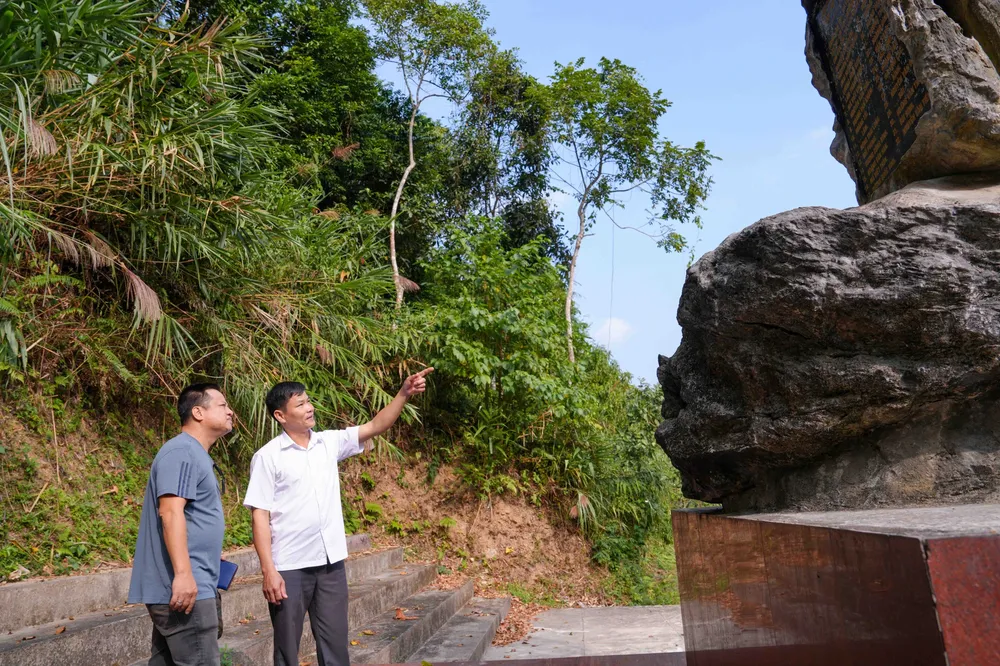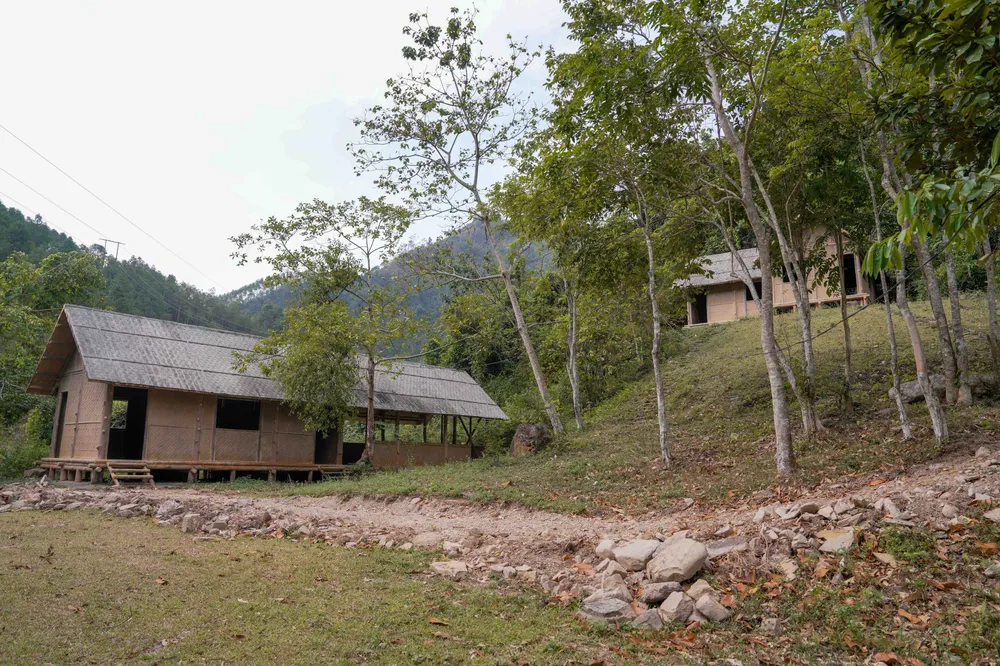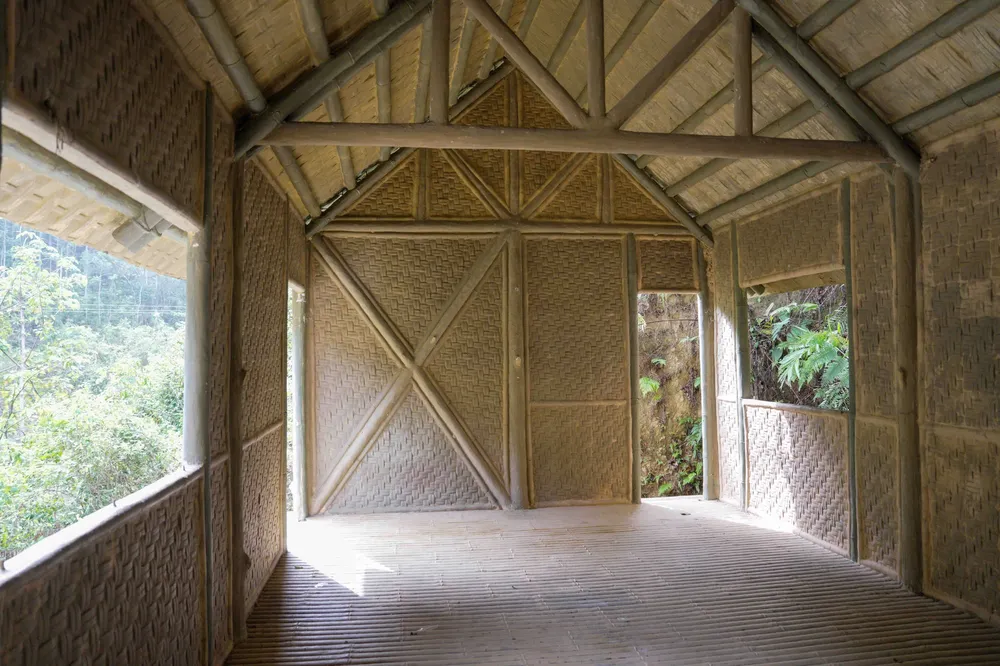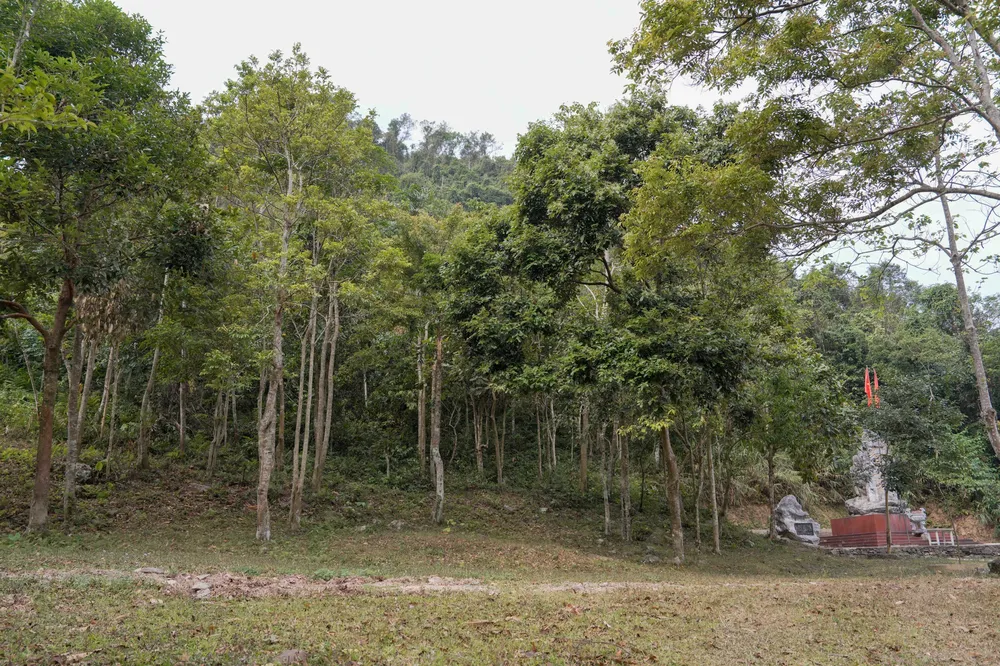
The Khuoi Noi Historical Site is located in Vu Lam Village of Vu Le Commune, approximately 33km north of Bac Son District center (Lang Son Province). Here, on February 23, 1941, the Bac Son National Salvation Army Unit was established. This was the first armed unit founded, organized, and led directly by the Vietnamese Communist Party, preparing for Vietnam's revolution to enter a new phase of armed insurrection and seizure of power.

On September 27, 1940, the Bac Son uprising commenced. Under the leadership of the Party cell in Bac Son District, the people rose up to intercept French forces retreating to Thai Nguyen Province and captured the Mo Nhai Military Post in the area.
In mid-October 1940, after being sent by the Tonkin Regional Party Committee to direct the uprising, Tran Dang Ninh issued a directive to establish the Bac Son Guerrilla Force with five armed platoons.

The uprising was suppressed after a brief period, forcing the insurgent force to withdraw into secret operations. Nevertheless, the Bac Son uprising entered national history as the first armed insurrection led by the Vietnamese Communist Party.
Following the Bac Son uprising, on November 23, 1940, the Nam Ky uprising erupted, becoming the second Party-led armed insurrection and leading to the formation of the Southern Guerrilla Force.

According to Col Assoc Prof Dr Tran Ngoc Long (former Deputy Head of the Military History Institute under the General Staff of the Vietnam People's Army), the gunfire and armed activities during the Bac Son uprising, followed by the Nam Ky uprising, provided invaluable lessons regarding armed insurrection at that time. It also marked a new phase in Vietnam’s revolution under Party leadership, which was to implement armed uprising to transfer power to the people.

In November 1940, the Party Central Committee’s 7th Session in Dinh Bang Commune of Bac Ninh Province praised the Bac Son uprising and resolved to maintain the Bac Son Guerrilla Force. Its mission was to combine armed resistance with anti-terrorism efforts, while simultaneously building strong mass foundations, aiming to establish a revolutionary stronghold centered in the Bac Son-Vo Nhai area of Thai Nguyen Province.

The Party Central Committee then initiated a policy of regional mobilization to bolster the Bac Son revolution. Nguyen Cao Dam and Bui Sinh were dispatched to provide direct support. Under the joint leadership of the Central and Tonkin Regional Party Committees, the Bac Son movement grew substantially, steadily expanding the guerrilla zone to encompass Vo Nhai District.
In February 1941, returning from the 8th Session of the Party Central Committee, a Party delegation comprising Truong Chinh, Hoang Quoc Viet, Hoang Van Thu, and Tran Dang Ninh stopped at Khuoi Noi of Bac Son District. There, Secretary Hoang Van Thu of the Tonkin Regional Party Committee, announced the renaming of the Bac Son Guerrilla Force to the Bac Son National Salvation Army Unit. On February 23, 1941, the 32-soldier army was officially formed in Khuoi Noi Forest, commanded by Luong Van Tri and his deputy Chu Van Tan.

At the founding ceremony, representing the Party Central Committee, Secretary Hoang Van Thu outlined the Bac Son National Salvation Army Unit’s mission: armed operations, base consolidation, rapid force development, and seizing opportunities for an uprising. They were also tasked with protecting Party cadres in the region, pledging absolute loyalty to the Party, Homeland, and national liberation.
The establishment of the Bac Son National Salvation Army marked a crucial developmental milestone in the revolutionary movement, both in Bac Son and throughout the nation generally. Khuoi Noi Forest has entered national history as the birthplace of the Party's first armed unit. The Bac Son National Salvation Army Unit (designated as National Salvation Army Unit 1) is considered the predecessor of today’s Vietnam People’s Army.
Following the establishment of National Salvation Army Unit 1, on September 15, 1941, in Khuon Manh Forest (Trang Xa Commune of Vo Nhai District in Thai Nguyen Province), on behalf of the Party Central Committee, Hoang Quoc Viet announced the formation of National Salvation Army Unit 2, comprising 36 officers and soldiers.
These developments marked a pivotal evolution in the Vietnamese Revolution during that period, encompassing the construction and enhancement of the Party’s armed forces in preparation for the subsequent general armed uprising.
On May 15, 1945, in Dinh Bien Thuong Commune of Dinh Hoa District in Thai Nguyen Province, the Vietnam Propaganda and Liberation Army Unit merged with the National Salvation Army Units to form the Vietnam Liberation Army.
On August 16, 1945, beneath the banyan tree in Tan Trao (Son Duong District of Tuyen Quang Province), General Vo Nguyen Giap delivered Military Order No. 1. Subsequently, the Vietnam Liberation Army conducted a deployment ceremony before advancing to liberate Hanoi, witnessed by ethnic minorities from Viet Bac and 60 national delegates attending the National Congress in Tan Trao.

The Khuoi Noi Site, part of the Bac Son Uprising Special National Historical Complex, preserves remnants of the National Salvation Army Unit’s camps and training grounds. In 2014, a guard post, barracks, a monument, and ceremonial grounds were added. To commemorate the 80th anniversary of the Vietnam People’s Army, the site underwent significant renovations, including a new exhibition hall and reception area.
Chairman Duong Cong Chung of the Vu Le Commune People’s Committee noted that local residents are immensely proud of their revolutionary history and cherish these sites. They and local authorities seek greater investment to better showcase these historical landmarks, both to preserve revolutionary traditions for future generations and to stimulate tourism development in the region.
In April 1945, the Revolutionary Military Conference of North Vietnam resolved to unify all revolutionary armed organizations nationwide into the Vietnam Liberation Army. During the August Revolution of 1945, the Vietnam Liberation Army, in concert with local armed forces and civilians, executed the General Uprising to secure national power.
Following the triumph of the August Revolution in 1945, the Vietnam Liberation Army was redesignated as the National Guard Corps, subsequently becoming the Vietnam National Army (1946), and finally adopting its current name as the Vietnam People’s Army in 1950.
























